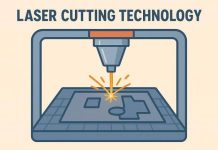The world of cryptocurrency has never stood still. Over the past decade, we’ve watched blockchain technology evolve from experimental projects to powerful financial ecosystems. With 2025 well underway, two of the most widely discussed methods of participating in the crypto economy remain staking and mining.
Both approaches allow individuals to earn rewards while supporting the networks they believe in, yet they operate on fundamentally different principles. For anyone looking to dive deeper, the choice between staking and mining is not just about potential profits—it’s about understanding your own risk tolerance, investment style, and long-term goals.
The Rise of Staking as a Mainstream Choice
Staking has gained significant traction in recent years, thanks largely to Ethereum’s shift to proof-of-stake (PoS). Instead of solving complex mathematical problems, as in proof-of-work (PoW), staking relies on validators locking up their coins to secure the network. In return, they receive rewards proportionate to their stake.
By 2025, staking will have become more accessible than ever. Many exchanges and wallets now offer easy-to-use staking services, lowering the barrier to entry. Investors no longer need to run their own validator nodes if they don’t wish to. Instead, they can delegate their coins to staking pools and still earn passive income.
From a risk perspective, staking is often seen as less volatile compared to mining. There’s no need to purchase expensive hardware or worry about fluctuating energy costs. However, staking is not risk-free. Lock-up periods may restrict liquidity, and the value of the staked asset can still fall with market downturns. Additionally, poor validator performance or slashing penalties can eat into rewards.
Mining in 2025: Still a Viable Path?
Mining remains a cornerstone of the cryptocurrency landscape, especially for networks that continue to run on proof-of-work. While Ethereum’s move to PoS diminished mining’s prominence, coins like Bitcoin, Litecoin, and others still depend on miners for network security and transaction verification.
By 2025, mining will have become more industrialized. Large-scale operations dominate the scene, leveraging renewable energy sources and advanced ASIC hardware to stay competitive. For small-scale miners, profitability is tougher to achieve but not impossible. Those with access to low-cost energy—particularly solar or hydro—may still find mining an attractive option.
Mining comes with unique risks and demands. Hardware costs are significant, and the rapid pace of technological upgrades means equipment can become obsolete quickly. Electricity prices, government regulations, and even environmental considerations play critical roles in determining whether mining is sustainable. While potential rewards can be substantial, the level of upfront investment and ongoing operational risk is higher compared to staking.
Evaluating Risk Profiles
So, how should you decide between staking and mining? The answer depends largely on your personal risk profile and what you hope to achieve in the crypto space.
For conservative investors, staking often presents the more stable option. It’s easier to get started, requires less technical knowledge, and offers relatively predictable returns. The risks—such as token price fluctuations or validator penalties—are typically lower compared to the operational hazards of mining.
For those with a higher tolerance for risk and a willingness to invest in infrastructure, mining may be more appealing. The potential for higher rewards exists, particularly in times of rising asset prices. However, this path requires a long-term commitment and a strong understanding of both technical and economic factors.
The Role of Education in Making the Right Choice
Whether you lean toward staking or mining, one truth remains constant: knowledge is your most valuable asset. Without a clear understanding of how these systems function, it’s easy to underestimate the risks or overestimate the potential rewards. This is where strong resources for crypto education become indispensable. By equipping yourself with reliable information, you can make decisions that not only fit your risk tolerance but also align with your long-term financial strategy.
In today’s fast-moving environment, strategies that worked just a few years ago may no longer be effective. Energy costs, network upgrades, and shifting regulations can alter the playing field overnight. Education helps you adapt to these changes and ensures that your choices remain informed rather than reactive.
The Bigger Picture: Staking, Mining, and the Future of Crypto
Beyond individual profit, both staking and mining play critical roles in sustaining the broader crypto ecosystem. Staking fosters greater participation and decentralization, allowing more people to be involved in securing networks without needing specialized equipment. Mining, on the other hand, continues to embody the ethos of proof-of-work resilience, providing a secure backbone for assets like Bitcoin that prioritize immutability and decentralization.
As we look ahead, it’s clear that both systems will coexist, each appealing to different participants with different goals. The growth of staking highlights crypto’s move toward efficiency and inclusivity, while the endurance of mining underscores the importance of tried-and-true security models.
Conclusion: Choosing Your Path Forward
The decision between staking and mining in 2025 ultimately boils down to knowing yourself as much as knowing the technology. Staking offers accessibility and relatively stable returns for those who prefer a lower-maintenance approach. Mining, meanwhile, remains a high-stakes endeavor suited for individuals or organizations prepared to invest heavily in infrastructure and ride the waves of volatility.
Neither path is inherently better than the other—they are simply different routes within the ever-expanding world of cryptocurrency. By carefully assessing your risk profile and equipping yourself with solid knowledge, you can choose the approach that not only aligns with your goals but also contributes meaningfully to the networks you believe in.








































